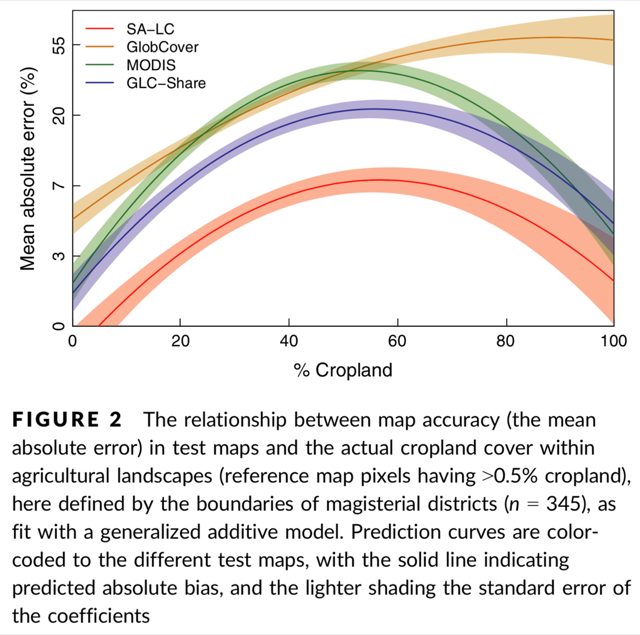A Large-Area, Spatially Continuous Assessment of Land Cover Map Error and Its Impact on Downstream Analyses

Estes, R., et al. (2018) “A Large-Area, Spatially Continuous Assessment of Land Cover Map Error and Its Impact on Downstream Analyses”, Global Change Biology, doi:10.1111/gcb.13904.
Abstract:Land cover maps increasingly underlie research into socioeconomic and environmental patterns and processes, including global change. It is known that map errors impact our understanding of these phenomena, but quantifying these impacts is difficult because many areas lack adequate reference data. We used a highly accurate, high-resolution map of South African cropland to assess 1) the magnitude of error in several current generation land cover maps, and 2) how these errors propagate in downstream studies. We first quantified pixel-wise errors in the cropland classes of four widely used land cover maps at resolutions ranging from 1 to 100 km, then calculated errors in several representative “downstream” (map-based) analyses, including assessments of vegetative carbon stocks, evapotranspiration, crop production, and household food security. We also evaluated maps’ spatial accuracy based on how precisely they could be used to locate specific landscape features. We found that cropland maps can have substantial biases and poor accuracy at all resolutions (e.g. at 1 km resolution, up to ∼45% underestimates of cropland (bias) and nearly 50% mean absolute error (MAE, describing accuracy); at 100 km, up to 15% underestimates and nearly 20% MAE). National-scale maps derived from higher resolution imagery were most accurate, followed by multi-map fusion products. Constraining mapped values to match survey statistics may be effective at minimizing bias (provided the statistics are accurate). Errors in downstream analyses could be substantially amplified or muted, depending on the values ascribed to cropland-adjacent covers (e.g. with forest as adjacent cover, carbon map error was 200-500% greater than in input cropland maps, but ∼40% less for sparse cover types). The average locational error was 6 km (600%). These findings provide deeper insight into the causes and potential consequences of land cover map error, and suggest several recommendations for land cover map users.
